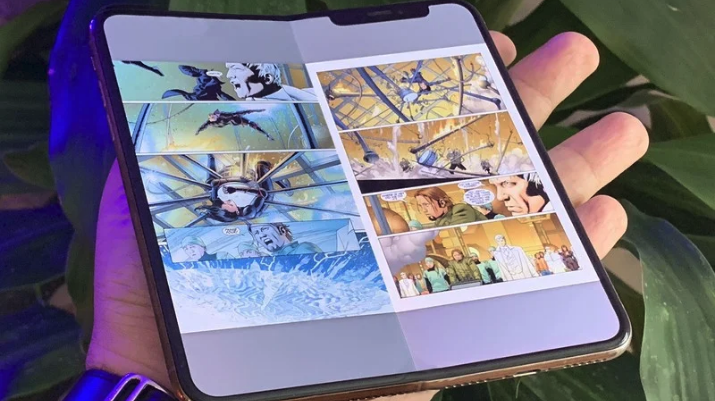Apple said to be testing coloured e-ink displays for a future foldable iPhone
According to analyst Ming-Chi Kuo, the technology is being trialled for external screens

Apple is trialling the use of E Ink electronic colour paper displays for future devices, according to reputable analyst Ming-Chi Kuo. In a tweet, Kuo said the company is testing the technology for applications on possible folding iPhones and iPads, where a second notification screen is required on the phone's external case.
E Ink is a company that specialises in several types of electrophoretic ink technologies. When laminated to a plastic film, it creates an electronic paper display most commonly used for signage and e-readers. EPDs come in several different varieties depending on the colour gamut required, but broadly speaking, they consist of charged coloured pigments suspended in a clear fluid in millions of microcapsules or microcups. When an electronic field is applied, different combinations of pigments rise to the top, where they become visible and form a coloured pixel.
On E Ink's site, the display type it recommends for smartphones is called Kaleido Plus, which the company says offers 16 levels of grayscale and 4096 colours, "ideal for image-rich information applications such as charts, graphs, maps, photos, comics and advertising" and viewable in direct sunlight.
Unlike OLED and LCDs, EDPs don't require backlighting and, as such, are up to 10 times more power-efficient. Its slow refresh rate, while fine for E-books, makes it unsuitable for the video-heavy features of modern phones. However, it could be ideal for a more utilitarian screen that's constantly pinging to life and displaying notifications.
Other companies have released smartphones with EDP screens, but like Hisense which unveiled its new E-Ink smartphone, the A9, just a few weeks ago, they tend to be targeted at those concerned about eye strain or who specifically want an e-reader hybrid device.
Using EDP technology would be a departure from Apple's rivals who have opted to equip their foldable phones with a second functional phone screen on the outer case. In the case of the Samsung Galaxy Z Fold, this exterior display boasts an enhanced 6.2-inch Dynamic AMOLED with 120Hz refresh rate (up from 60Hz in the Fold 2), which can display messages and news and allow functionality for calls or using the 10MP cover camera without having to open up the phone.
Apple is testing E Ink's Electronic Paper Display (EPD) for future foldable device's cover screen & tablet-like applications. The color EPD has the potential to become a mainstream solution for foldable devices' must-have cover/second screen thanks to its excellent power-saving.May 17, 2022
Apple hasn't actually announced that it's working on a foldable iPhone. Still, unverified reports have suggested that the company is working on a foldable display with a "mostly invisible hinge" that could unfold to around the size of the iPhone 12 Pro Max. Kuo has also weighed in on this debate in the past, tipping Apple to launch a foldable iPhone next year that "will adopt TPK's silver nanowire touch solution". Silver nanowire (SNW) is a new conductive film solution said to be a cost-effective way to make paper-thin, bendable OLED displays.
Get the What Hi-Fi? Newsletter
The latest hi-fi, home cinema and tech news, reviews, buying advice and deals, direct to your inbox.
Earlier this month, Kuo elaborated on those claims saying that Apple is beavering away on a folding iPhone with an 8-inch QHD+ flexible OLED display, even going so far as to say the tech giant will ship 15 to 20 million folding smartphones in 2023.
MORE:
Read the iPhone 12 Pro Max review
Check out the best smartphones for movies and music
Hands-on: Samsung Galaxy Z Fold 3 5G review
Mary is a staff writer at What Hi-Fi? and has over a decade of experience working as a sound engineer mixing live events, music and theatre. Her mixing credits include productions at The National Theatre and in the West End, as well as original musicals composed by Mark Knopfler, Tori Amos, Guy Chambers, Howard Goodall and Dan Gillespie Sells.
